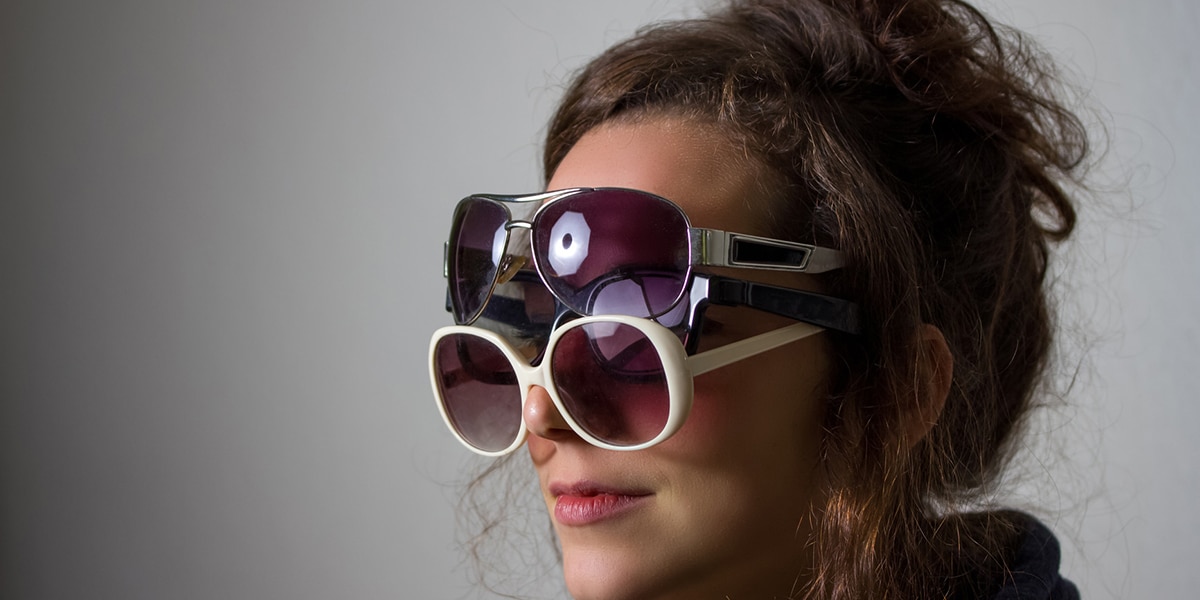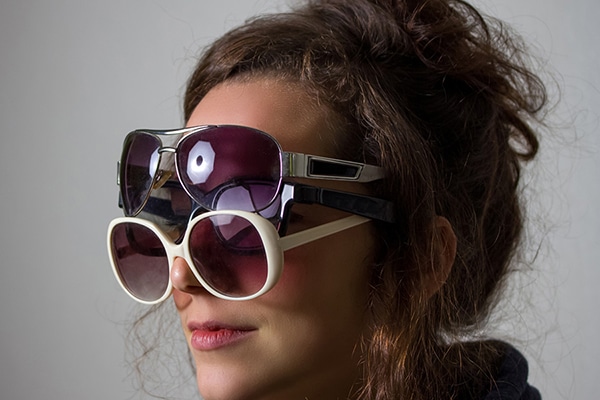Sunglasses are more than a fashion statement. They block out the sun’s harmful UV rays, which cause damage to our skin and eyes alike. Choosing not to wear sunglasses – or choosing ones that aren’t 100% UV protective – puts you at risk of several eye ailments later in life. Read on to find out what could happen to your eyes if you don’t wear sunglasses.

1. You could develop an “eye sunburn”.

We all know that sunscreen protects our skin from sunburn caused by overexposure to the sun’s harmful UV rays. The sun’s UV rays can reflect off of surfaces like sand, water, ice, and snow, and bounce back towards our eyes. This can lead to a condition called photokeratitis, sometimes referred to as snow blindness. Photokeratitis can be caused by man-made sources of UV radiation too, like tanning beds¹. Photokeratitis usually goes away on its own, but if your case is severe, see an eye doctor. To avoid a painful eye sunburn, wear UV protective sunglasses when exposed to the sun.
2. You could develop cataracts.

Cataracts, or clouding of the lens of the eye, can be caused by excessive unprotected exposure to UV rays. Blurry vision, double vision, light sensitivity, difficulty seeing at night, and faded color vision are all signs that you may have a cataract. In order to treat cataracts, the lens of the eye is surgically removed and replaced by a new artificial lens.² UV-protective sunglasses can help reduce your chance of requiring cataract surgery later in life. According to the National Eye Institute, half of caucasian Americans develop a cataract after the age of 75, with the risk increasing after age 40. John Goodman and Larry King suffered from cataracts.
3. You may develop an eye growth.

Pinguecula and pterygium are two scientific terms for growths on the eye. A pinguecula presents as a small, yellow growth on the white of the inner corner of your eye. A pterygium presents as a pink tissue-like growth in the same location. If left untreated, a pinguecula could turn into a pterygium. These growths are often treated with prescription eye drops but if they are severe or bothersome enough, they may need to be surgically removed.³
4. You could develop eye cancer.

Intraocular or uveal melanoma is the medical term for a type of eye cancer. Individuals with light-colored eyes are at the highest risk for this type of cancer. Some symptoms include blurred vision, a dark spot on the iris, seeing “floaters” or spots drifting in your field of vision, and seeing flashes of light. Some treatment options include surgery, radiation therapy, photocoagulation or laser beam treatment, and thermotherapy. In extreme cases, the eye and part of the optic nerve may need to be removed.⁴ If that’s not enough motivation to wear sunglasses, what is?
5. You could develop crows feet.

UV-protective sunglasses prevent UV rays from reaching the sensitive skin around the eye area. The skin in these regions is thinner than other parts of our bodies, and thus, is more susceptible to premature aging and wrinkles caused by UV rays. Also, sunglasses help suppress the urge to squint while exposed to the sun. Squinting also contributes to the development of crows feet.
6. You could damage your eyes with cheap sunglasses.

While higher end sunglasses don’t necessarily protect your eyes more, some cheap sunglasses aren’t UV-protective. The problem with this is that our pupils naturally dilate when in dark environments, letting even more UV light into your eyes if your sunglasses aren’t UV-protective. The best way to get around this problem is to make sure you opt for 100% UV-protective sunglasses.⁵
Sources
- Porter, D. (2016). What is Photokeratitis — Including Snow Blindness? Retrieved July 27, 2017
- Boyd, K. (2016). Cataracts. Retrieved July 27, 2017
- Boyd, K. (2017) Pinguecula and Pterygium. Retrieved July 27, 2017
- National Cancer Institute. (2017). Intraocular (Uveal) Melanoma Treatment (PDQ®)–Patient Version. Retrieved July 27, 2017
- All About Vision. (2017). Sunglasses And UV Light: Q&A. Retrieved July 31, 2017










